Abstract
Two phase I strains of Coxiella burnetii of different virulence were injected into the yolk sacs of chicken embryos, and the yolk sacs and livers were examined at intervals by light, fluorescent, and electron microscopy. The high absorptive and digestive capacities of the yolk endoderm contributed to he entrance of the organisms into endodermal epithelial cells where C. burnetii multiplied. Organisms multiplied not only inside specific vacuoles originating from phagolysosomes but also in the cytoplasm itself. Lysis of the limiting membrane of some phagolysosomes, a normal function of endodermal cells, as well as rupture of vacuoles, provided the release of C. burnetii into the cytoplasm. The C. burnetii strain of greater virulence infected 100% of the endodermal cells, whereas the strain of lesser virulence infected only 60%. Budding of very small particles from the C. burnetii bodies was demonstrated. The particles were regarded as filterable forms of the organism. Despite the enormous multiplication of C. burnetii in the endodermal cells, organisms were only rarely detected in the vitelline blood vessels and liver sinusoids of the embryos. Peculiarities of the infectious process of C. burnetii in chicken embryos and possible mechanisms of limitation of spread of the infection are discussed.
Full text
PDF
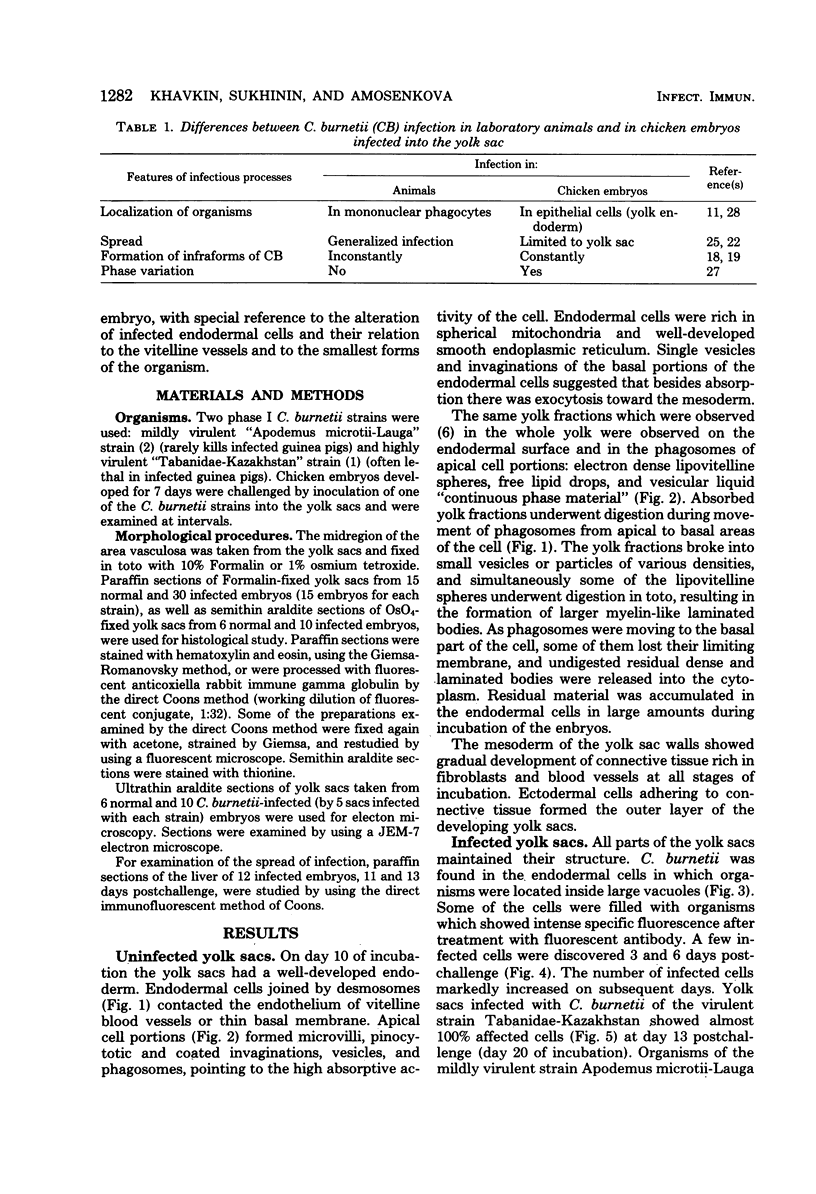
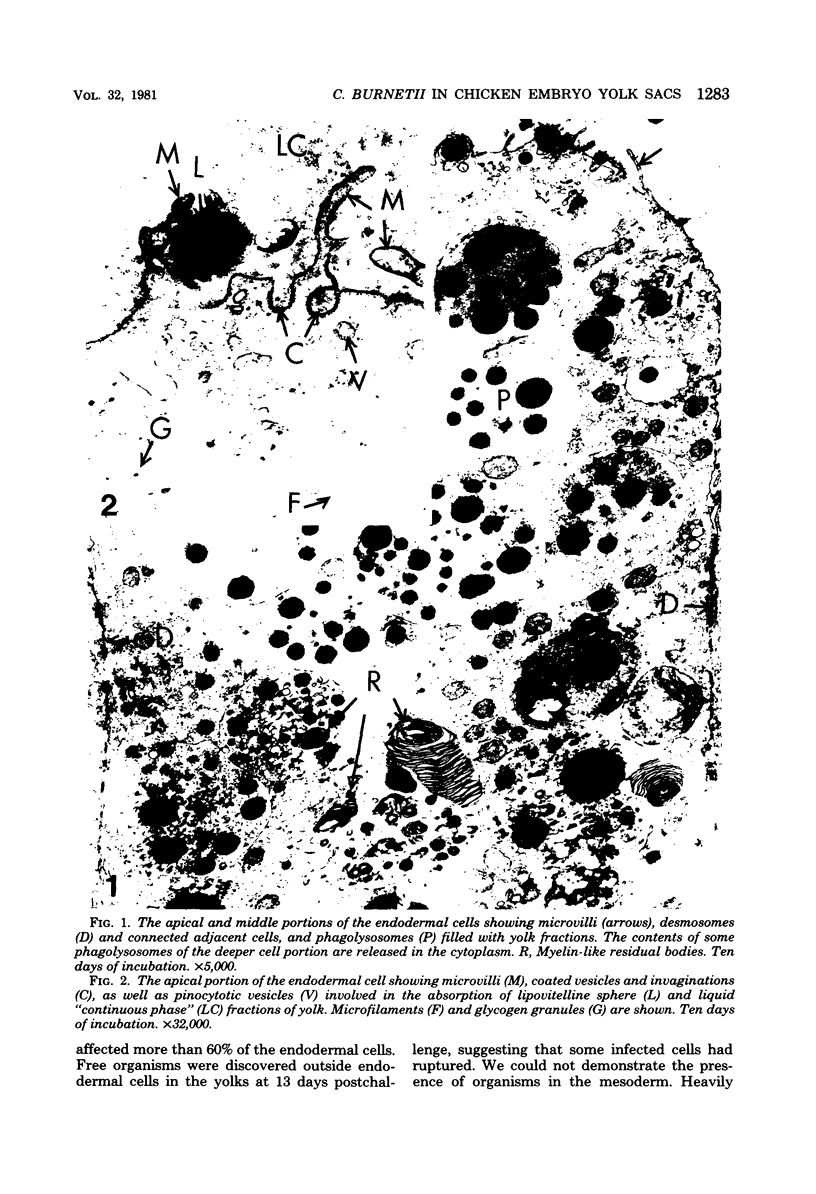
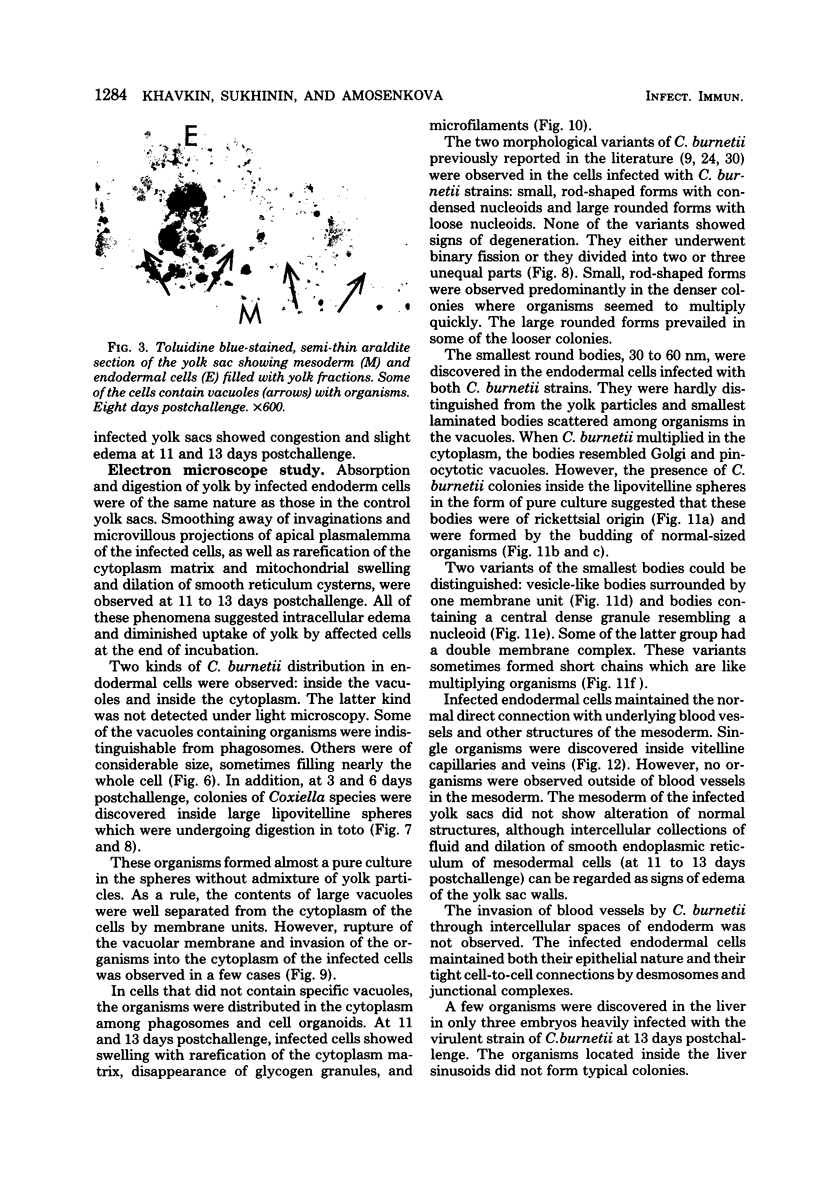
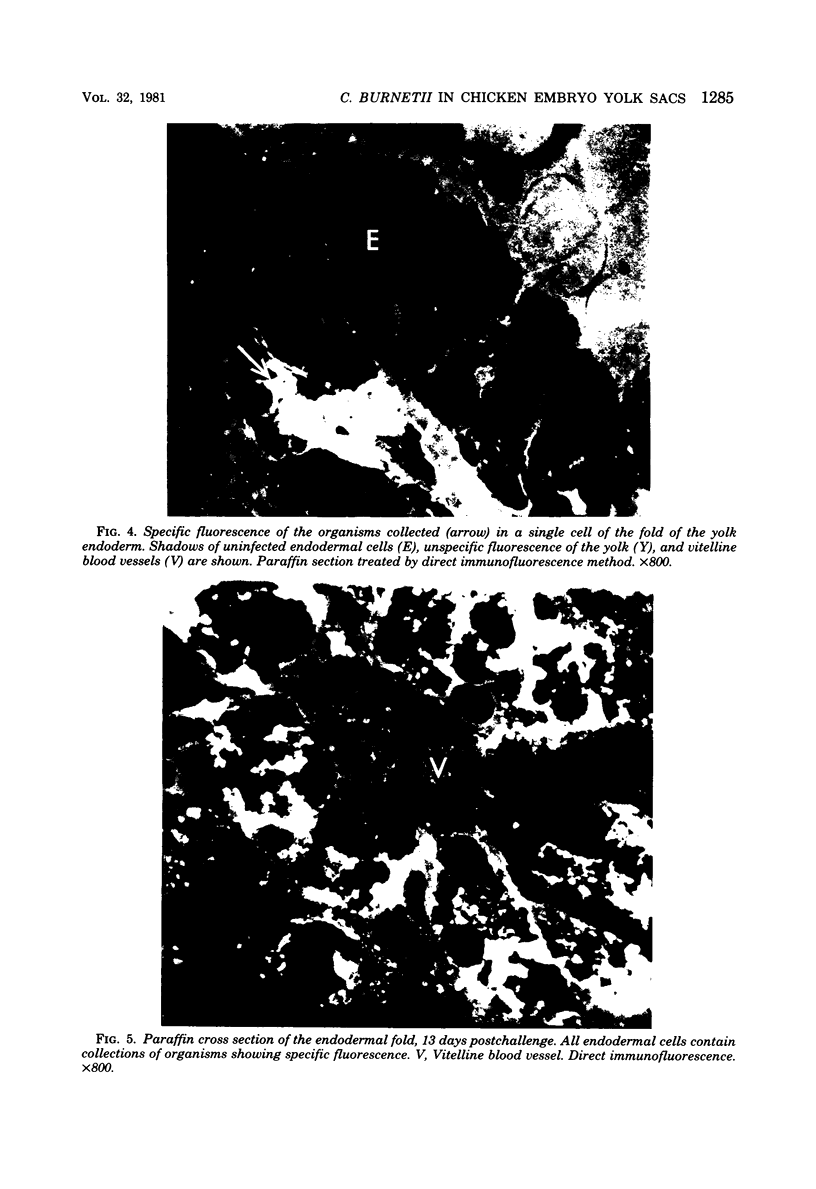

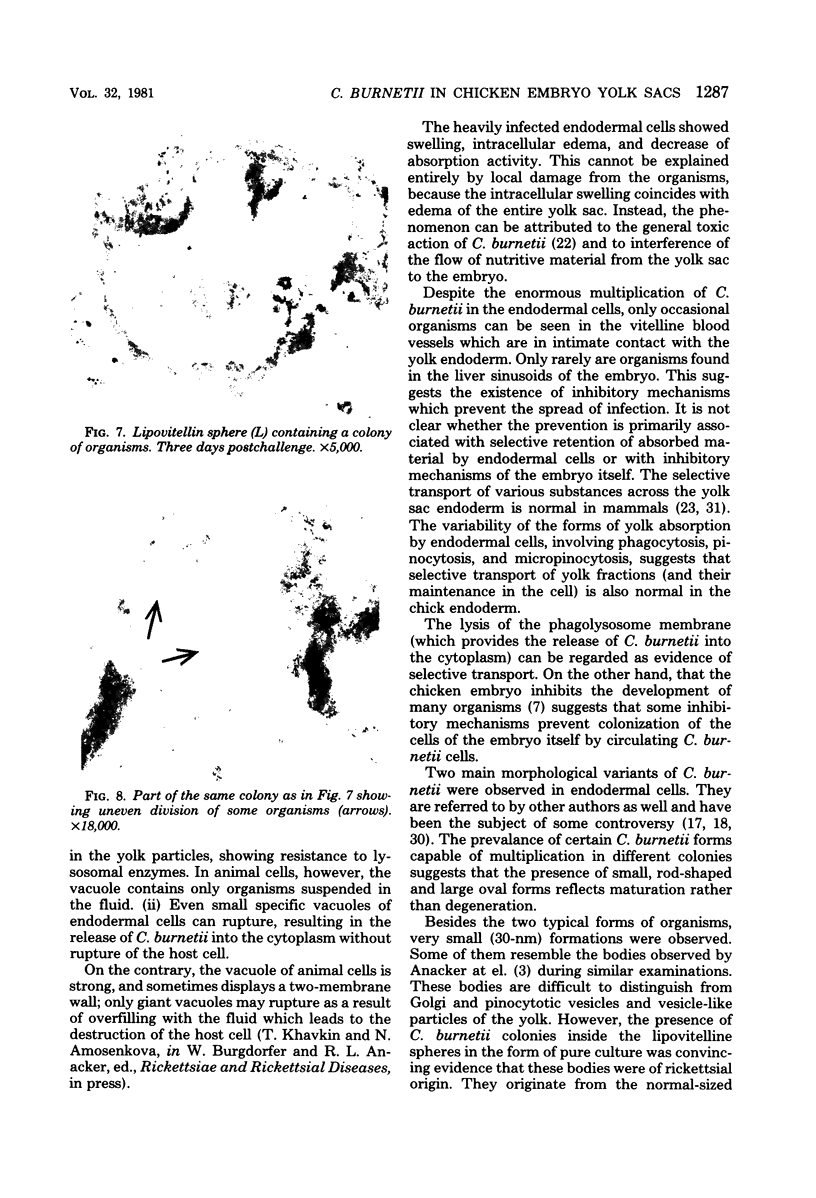
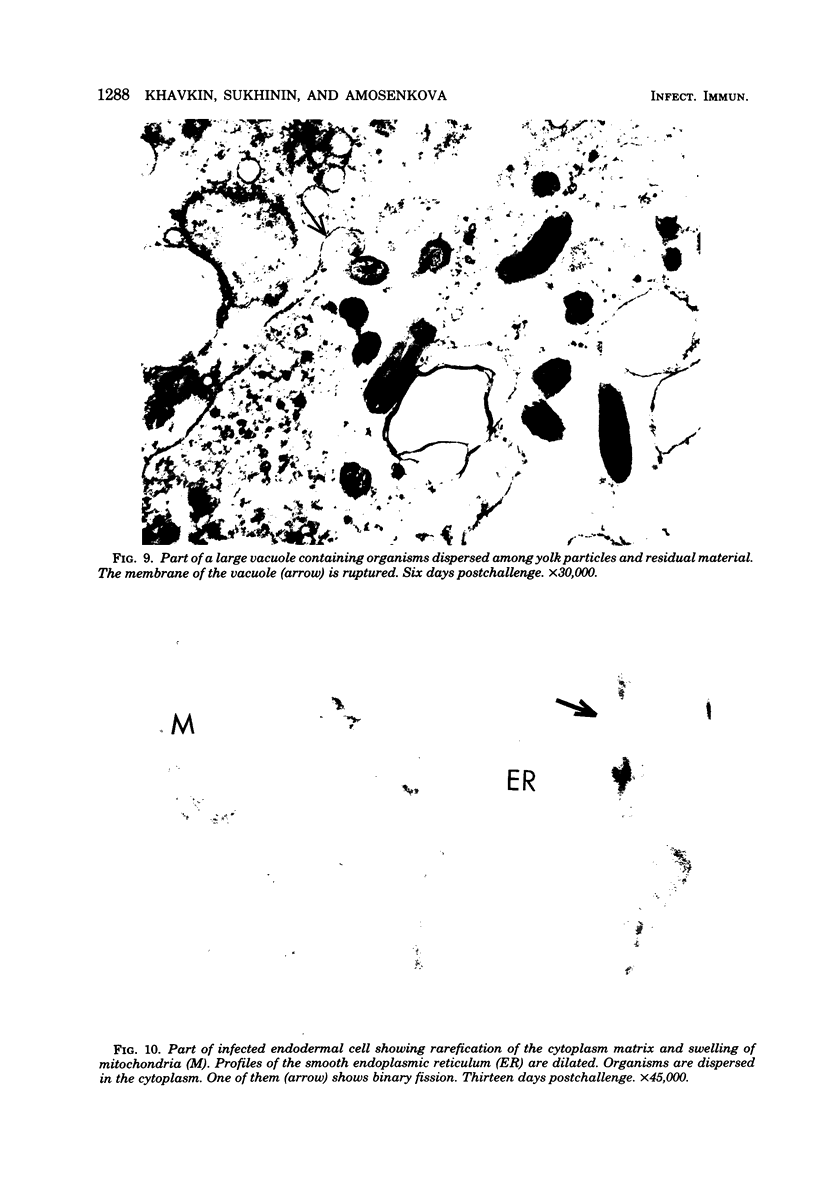
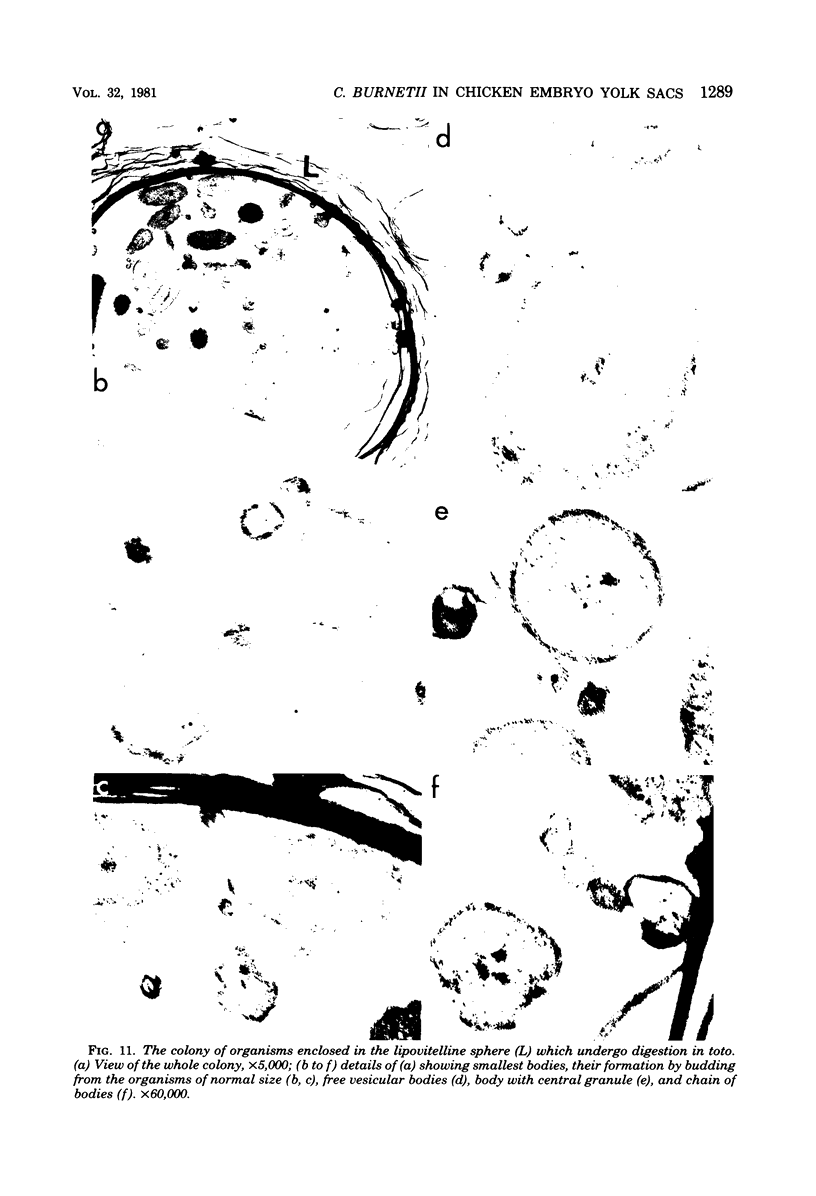
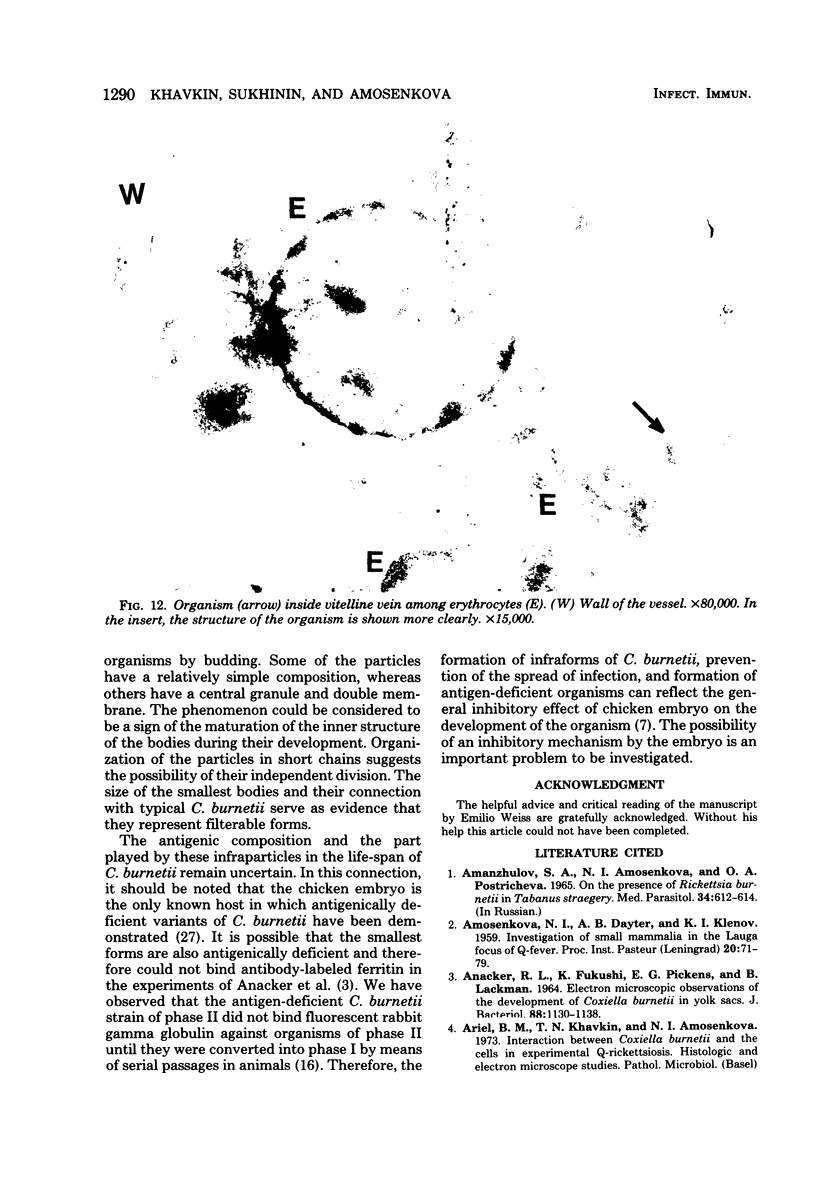
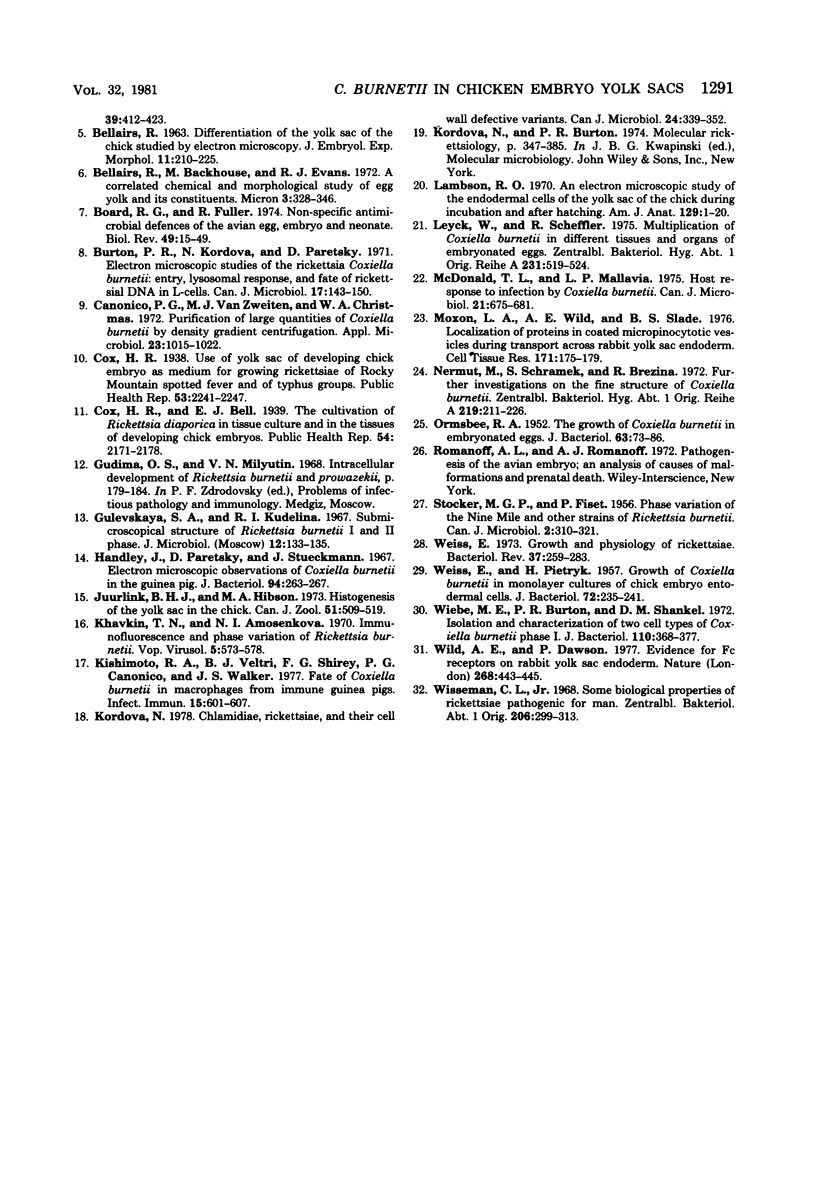
Images in this article
Selected References
These references are in PubMed. This may not be the complete list of references from this article.
- ANACKER R. L., FUKUSHI K., PICKENS E. G., LACKMAN D. B. ELECTRON MICROSCOPIC OBSERVATIONS OF THE DEVELOPMENT OF COXIELLA BURNETII IN THE CHICK YOLK SAC. J Bacteriol. 1964 Oct;88:1130–1138. doi: 10.1128/jb.88.4.1130-1138.1964. [DOI] [PMC free article] [PubMed] [Google Scholar]
- Amosenkova N. I., Khavkin T. N. Immunofliuorestsentsiia i fazovaia izmenchivost' rikketskii Berneta. Vopr Virusol. 1970 Sep-Oct;15(5):573–579. [PubMed] [Google Scholar]
- Board R. G., Fuller R. Non-specific antimicrobial defences of the avian egg, embryo and neonate. Biol Rev Camb Philos Soc. 1974 Feb;49(1):15–49. doi: 10.1111/j.1469-185x.1974.tb01297.x. [DOI] [PubMed] [Google Scholar]
- Burton P. R., Kordová N., Paretsky D. Electron microscopic studies of the rickettsia Coxiella burneti: entry, lysosomal response, and fate of rickettsial DNA in L-cells. Can J Microbiol. 1971 Feb;17(2):143–150. doi: 10.1139/m71-025. [DOI] [PubMed] [Google Scholar]
- Canonico P. G., Van Zwieten M. J., Christmas W. A. Purification of large quantities of coxiella burnetii rickettsia by density gradient zonal centrifugation. Appl Microbiol. 1972 May;23(5):1015–1022. doi: 10.1128/am.23.5.1015-1022.1972. [DOI] [PMC free article] [PubMed] [Google Scholar]
- Handley J., Paretsky D., Stueckemann J. Electron microscopic observations of Coxiella burnetii in the guinea pig. J Bacteriol. 1967 Jul;94(1):263–267. doi: 10.1128/jb.94.1.263-267.1967. [DOI] [PMC free article] [PubMed] [Google Scholar]
- Juurlink B. H., Gibson M. A. Histogenesis of the yolk sac in the chick. Can J Zool. 1973 May;51(5):509–519. doi: 10.1139/z73-076. [DOI] [PubMed] [Google Scholar]
- Kishimoto R. A., Veltri B. J., Shirey F. G., Canonico P. G., Walker J. S. Fat of Coxiella burnetti in macrophages from immune guinea pigs. Infect Immun. 1977 Feb;15(2):601–607. doi: 10.1128/iai.15.2.601-607.1977. [DOI] [PMC free article] [PubMed] [Google Scholar]
- Kordová N. Chlamydiae, rickettsiae, and their cell wall defective variants. Can J Microbiol. 1978 Apr;24(4):339–352. doi: 10.1139/m78-058. [DOI] [PubMed] [Google Scholar]
- Lambson R. O. An electron microscopic study of the entodermal cells of the yolk sac of the chick during incubation and after hatching. Am J Anat. 1970 Sep;129(1):1–19. doi: 10.1002/aja.1001290102. [DOI] [PubMed] [Google Scholar]
- Leyk W., Scheffler R. Die Vermehrung von Coxiella burneti in verschiedenen Geweben und Organen des embryonierten Hühnereies. Zentralbl Bakteriol Orig A. 1975 May;231(4):519–524. [PubMed] [Google Scholar]
- McDonald T. L., Mallavia L. P. Host response to infection by Coxiella burneti. Can J Microbiol. 1975 May;21(5):675–681. doi: 10.1139/m75-097. [DOI] [PubMed] [Google Scholar]
- Moxon L. A., Wild A. E. Localisation of proteins in coated micropinocytotic vesicles during transport across rabbit yolk sac endoderm. Cell Tissue Res. 1976 Aug 20;171(2):175–193. doi: 10.1007/BF00219405. [DOI] [PubMed] [Google Scholar]
- Nermut M. V., Schramek S., Brezina R. Further investigations on the fine structure of coxiella burneti. Zentralbl Bakteriol Orig A. 1972 Feb;219(2):211–226. [PubMed] [Google Scholar]
- ORMSBEE R. A. The growth of Coxiella burnetii in embryonated eggs. J Bacteriol. 1952 Jan;63(1):73–86. doi: 10.1128/jb.63.1.73-86.1952. [DOI] [PMC free article] [PubMed] [Google Scholar]
- PIETRYK H. C., WEISS E. Growth of Coxiella burnetii in monolayer cultures of chick embryo entodermal cells. J Bacteriol. 1956 Aug;72(2):235–241. doi: 10.1128/jb.72.2.235-241.1956. [DOI] [PMC free article] [PubMed] [Google Scholar]
- STOKER M. G., FISET P. Phase variation of the Nine Mile and other strains of Rickettsia burneti. Can J Microbiol. 1956 May;2(3):310–321. doi: 10.1139/m56-036. [DOI] [PubMed] [Google Scholar]
- Weiss E. Growth and physiology of rickettsiae. Bacteriol Rev. 1973 Sep;37(3):259–283. doi: 10.1128/br.37.3.259-283.1973. [DOI] [PMC free article] [PubMed] [Google Scholar]
- Wiebe M. E., Burton P. R., Shankel D. M. Isolation and characterization of two cell types of Coxiella burneti phase I. J Bacteriol. 1972 Apr;110(1):368–377. doi: 10.1128/jb.110.1.368-377.1972. [DOI] [PMC free article] [PubMed] [Google Scholar]
- Wild A. E., Dawson P. Evidence for Fc receptors on rabbit yolk sac endoderm. Nature. 1977 Aug 4;268(5619):443–445. doi: 10.1038/268443a0. [DOI] [PubMed] [Google Scholar]
- Wisseman C. L., Jr Some biological properties of rickettsiae pathogenic for man. Zentralbl Bakteriol Orig. 1968 Apr;206(3):299–313. [PubMed] [Google Scholar]













